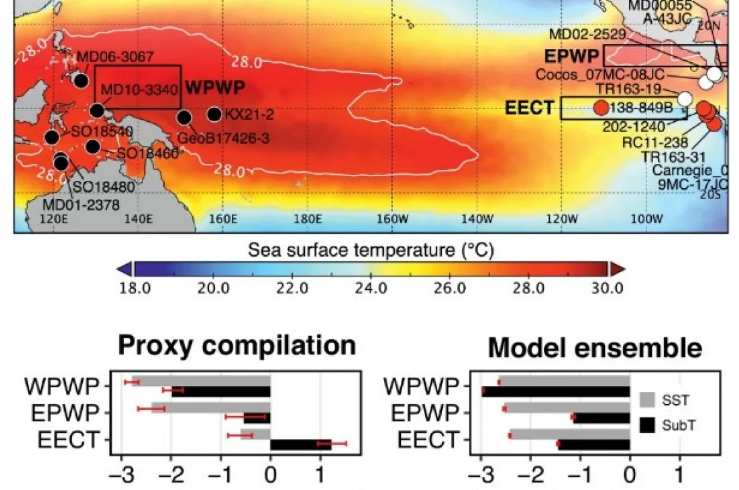
A research team led by National Taiwan University used geochemical indicators from deep-sea sediments to reconstruct the upper ocean zonal gradients in the tropical Pacific during the last glacial period, providing valuable constraints for future climate projections.
The tropical Pacific Ocean plays an important role in the global climate system. El Niño events wreak havoc worldwide by causing extreme weather and droughts. To better prepare for future changes in this region, it is crucial that climate models can accurately simulate changes in the mean state of the tropical Pacific. Unfortunately, most state-of-the-art climate models fail to reproduce the observed warming pattern of sea surface temperatures in the tropical Pacific over the last century.
To further evaluate the performance of these models under different atmospheric CO2 levels, postdoctoral researcher Alicia Hou at University of Bordeaux and Associate Professor Sze Ling Ho from the Institute of Oceanography National Taiwan University, along with their collaborators from the University of Bremen and Queen Mary University of London, collated paleotemperature estimates from past climates characterized by contrasting atmospheric CO2 levels for comparison with model simulations. These paleotemperature estimates are inferred from geochemical indicators analyzed on microfossils extracted from deep-sea sediments, also known as paleoclimate proxies.
Before performing a proxy-model comparison, the team first used Argo data to ensure that several temperature indices commonly used in paleoclimate reconstruction can indeed capture changes in the upper ocean thermal conditions of the tropical Pacific during El Niño and La Niña events. They then generated a multi-model ensemble using simulations from seven state-of-the-art models based in institutions in North America, Europe, and Asia, under the auspices of the Paleoclimate Modelling Intercomparison Project (PMIP).
According to researchers, the proxy-model comparison results indicate that similar to the warming observed over the last century, these models were unable to reproduce the tropical Pacific cooling pattern when atmospheric CO2 levels were about half of today’s levels. The discrepancies between proxies and models may stem from the fact that the models overestimate sea surface temperature changes in the eastern tropical Pacific.
The proxy results also suggest that the western Pacific may warm more than the eastern Pacific if greenhouse gas emissions continue unabated in the future. This study demonstrates the usefulness of paleoclimate proxies in improving climate models and informing future climate projections.







